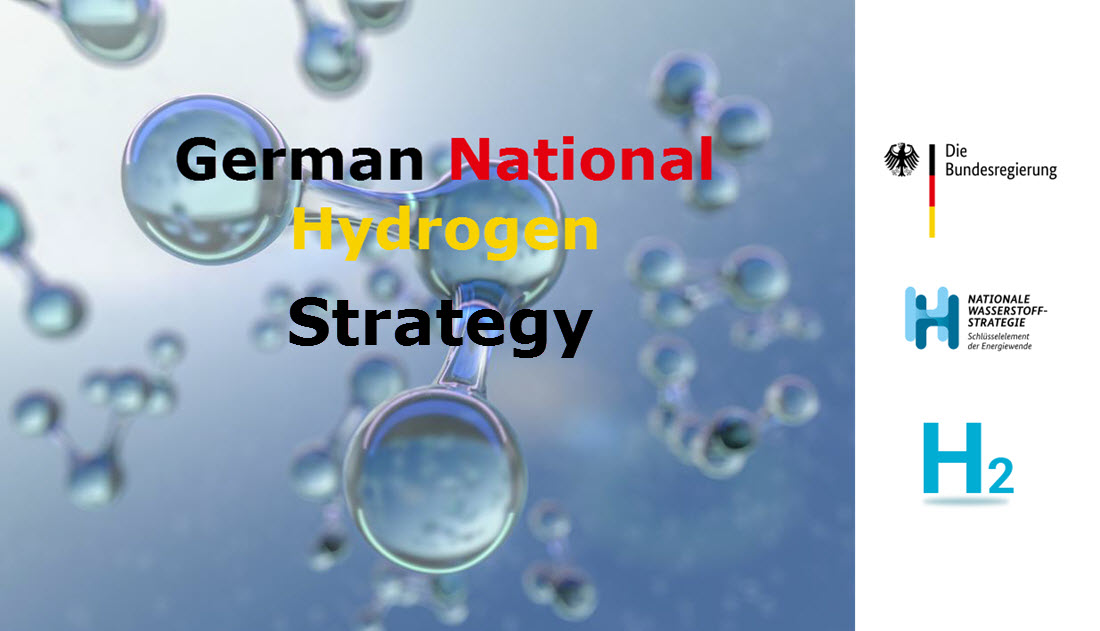
Berlin–It took a long time with periods of agreement and disagreement, but finally, the German Cabinet today passes the National Hydrogen (H2) Strategy. The strategy will help decarbonize the German economy and cut the use of coal and phase out the nuclear business entirely.
In the National Hydrogen Strategy, the government proposes that Germany build an electrolysis capacity of 5,000 megawatts (MW) by 2030 and 10,000 MW by 2040 to produce the new fuel.
Below Follows the highlights of the Strategy.
Hydrogen: key element for the energy transition
For the long-term success of the energy transition and for climate protection, we need alternatives to fossil fuels. Hydrogen will play a key role as a versatile energy source. Because it makes it possible to significantly reduce CO2 emissions, especially in industry and transport , with the help of renewable energies .
In addition to the climate policy aspects, hydrogen technologies are also about many future-proof jobs, new value creation potential and a global billion dollar market. German companies are already very well positioned in this area, for example in electrolysis and fuel cells. The goal is for Germany to take a leading position in hydrogen technologies. The Federal Government has therefore presented a hydrogen strategy with an action plan.
The strategy has the following main objectives:
- Establish hydrogen technologies and, based on them, CO2- free energy sources as core elements of the energy turnaround, in order to decarbonise industrial production processes with the help of renewable energies.
- To create the regulatory prerequisites for a ramp-up of hydrogen technologies, that is, to enable domestic markets for the production and use of hydrogen. The focus is on areas that are already close to profitability or that – according to the current state of the art – cannot be decarbonized in any other way, such as certain industrial and transport areas (air, ship, long-distance traffic).
- With these measures, reduce the costs of implementing hydrogen technologies to create global markets for hydrogen.
- Strengthen German companies and their competitiveness by promoting research and development and technology export related to innovative hydrogen technologies.
- Secure and shape the future national supply of CO2- free hydrogen and its secondary products. That means finding reliable international partners – with a focus on the EU – in addition to domestic generation potential for the production and transport of hydrogen or establishing appropriate cooperations and import structures. This also offers the opportunity to expand the EU energy market and to cooperate with sunny and windy developing countries that have a high potential for renewable energies – Germany could import so-called “green hydrogen” from them.
Conference “Hydrogen and Energy Transition”
The stakeholder conference “Hydrogen and Energy Transition” on November 5, 2019 in Berlin, to which Federal Minister of Economics Peter Altmaier had invited, showed how great the interest in hydrogen technology is. More than 700 participants from business, science, politics, various associations and non-governmental organizations (NGOs) discussed the future role of hydrogen in the energy transition and for climate protection as well as the associated industrial policy potential in Germany and in other countries. If Germany establishes hydrogen technologies on a larger scale, there is also a large technological export potential.
WHAT IS HYDROGEN?
Of green, blue and gray hydrogen
In order to advance the energy transition, innovative technologies are required – hydrogen technology is an important building block. The great advantages of hydrogen are that it can be used to store and transport energy easily. This enables significantly greater flexibility in energy supply.
Hydrogen is a gas and abundant on Earth, but almost exclusively in chemical compounds (water, acids, hydrocarbons, etc.). Hydrogen is obtained by splitting water (H2O) into oxygen (O) and hydrogen (H2). However, it takes a lot of energy to split off the H2 molecule. If this is done with the help of electric current, one speaks of electrolysis.
Electrolysis with electricity from renewables
Electricity from renewable energies such as wind and sun can be used to produce hydrogen using electrolysis. Then one speaks of “green” hydrogen. The process is also known as power-to-gas – it is one of the power-to-X technologies (PtX technologies) in which electricity is used to generate gases (power-to-gas), heat (power -to-heat) or liquid energy sources (power-to-liquid). PtX technologies are considered an important solution to meet climate goals and reduce greenhouse gas emissions.
But the “blue” hydrogen produced by carbon capture and storage (so-called carbon capture and storage, CCS ) can also make an important contribution to CO2 reduction for at least a transitional period . The blue hydrogen is considered to be CO2 -free if no CO2 escapes into the atmosphere during production . “Gray” hydrogen, on the other hand, is not CO2 neutral: In any case, CO2 is produced during production because it is obtained from fossil energy sources such as natural gas or is generated in industry.
Sector coupling brings great advantages
An important element in the hydrogen strategy is the so-called sector coupling. It serves the closer interlinking or networking of electricity and heat, transport sector and industry. Sector coupling has several major advantages. They can also indirectly use electricity from renewable energies in many areas of industry that are difficult to electrify. In this way, it makes it possible for all sectors to reduce their CO2 emissions using renewable energies .
Another advantage is that the overall energy consumption can be reduced through efficiency gains. All of this leads to a reduction in greenhouse gas emissions and thus serves climate protection. In addition, the demand for electrical energy can be made significantly more flexible, thus compensating for fluctuations in the supply of renewable energies (wind, sun, biomass).
Read the most up to date Fuel Cell and Hydrogen Industry news at FuelCellsWorks




